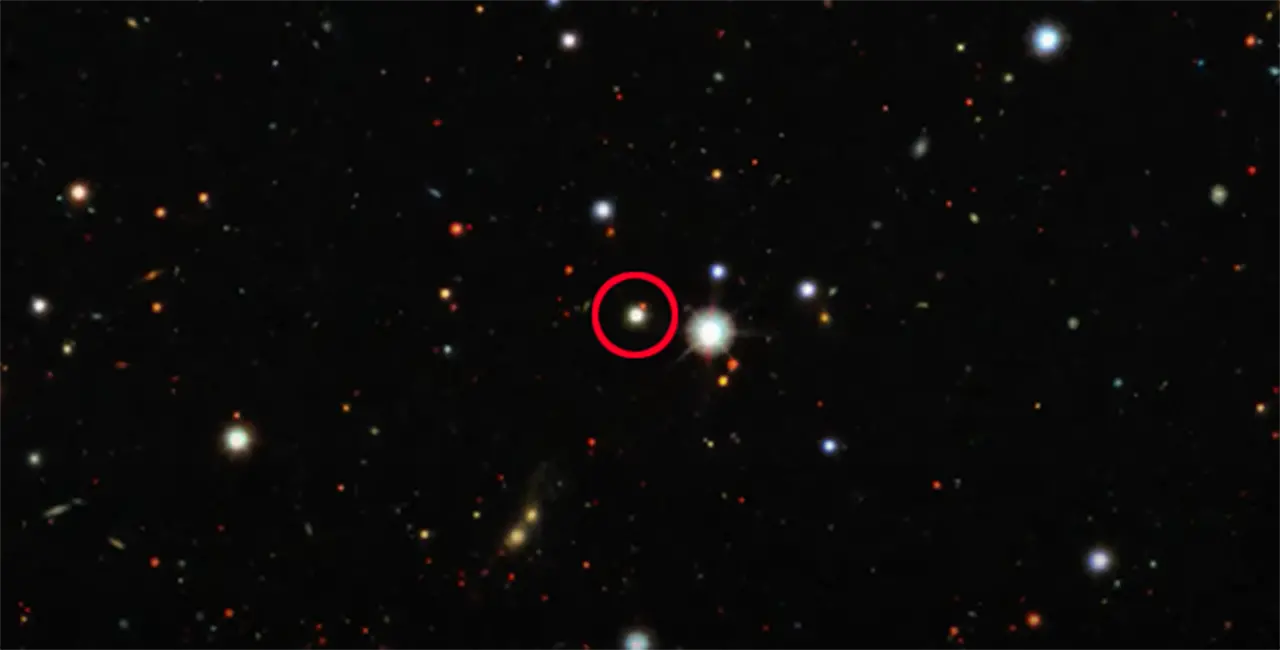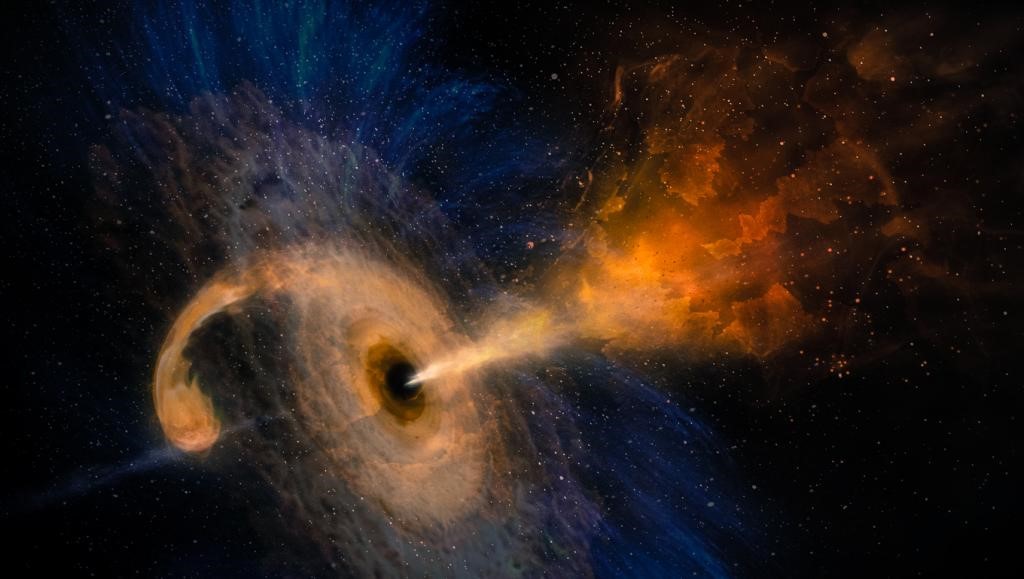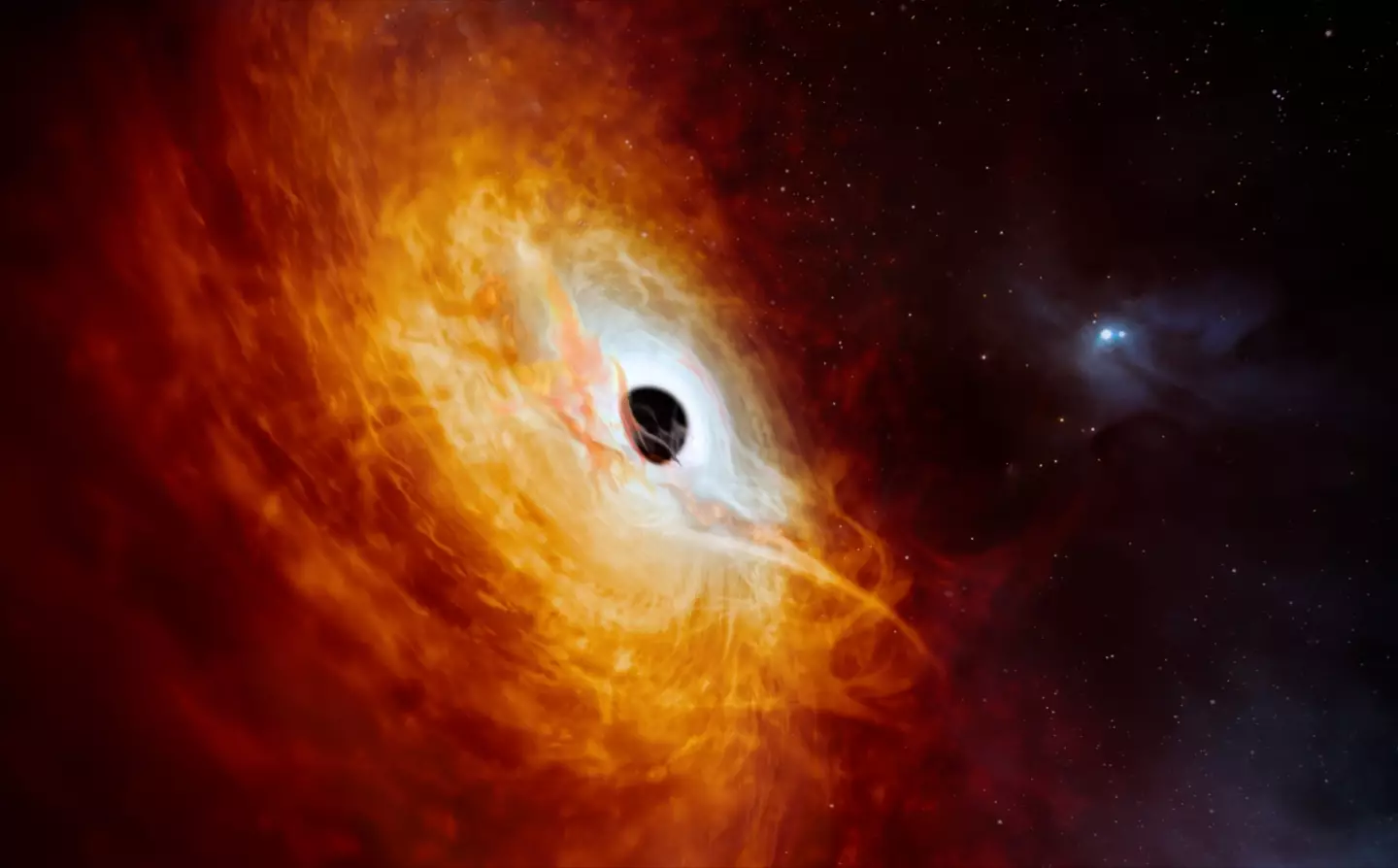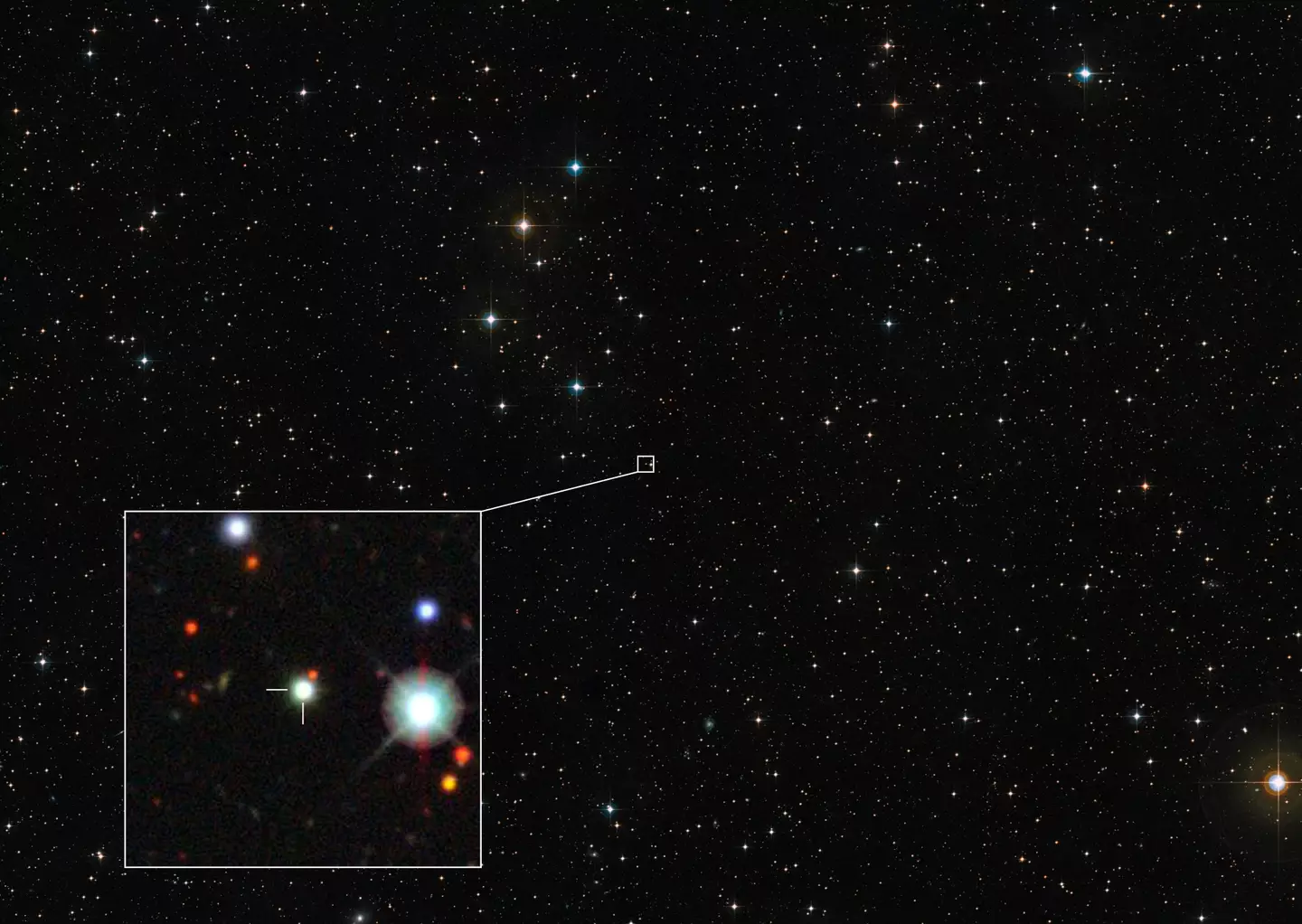Scientist have revealed the most ‘violent’ and ‘hellish’ place

Scientists have discovered the most ‘hellish place’ in the universe – in case you were wondering.
According to researchers from the Australian National University (ANU), the worst place you could possibly find yourself is a quasar with a massive black hole that is sucking in everything nearby.
Thankfully, the black hole in question, which is officially called J0529-4351, is around 12 billion light years away, so it’s unlikely you’ll find yourself there anytime.

Scientists have determined that the quasar is engulfing the equivalent of 370 suns a year – roughly one a day.
The black hole is more than 17 billion times more immense than our sun, the team reported in the journal Nature Astronomy.
In fact, it’s been suggest that it could be the brightest thing in the universe and shines 500 trillion times brighter
ANU associate professor Christian Wolf, the lead author of the study said: “This quasar is the most violent place that we know in the universe.”

ESO/M. Kornmesser
He added: “The incredible rate of growth also means a huge release of light and heat.
“So, this is also the most luminous known object in the universe. It’s 500 trillion times brighter than our sun.”
In an interview with Newsweek he expanded: “The disc is hot, from thousands of degrees Fahrenheit on the outside to many 10,000 degrees Fahrenheit at the edge of the eye of the storm.

“The whole storm is threaded with strong magnetic fields and there are lightning bolts of cosmic size discharging everywhere.
“We have now found the possibly most hellish place in the Universe.”
The European Southern Observatory spotted the object during a 1980 sky survey, but it was initially thought to be a star.

ESO/Digitized Sky Survey 2/Dark Energy Survey
It was not identified as a quasar – the extremely active and luminous core of a galaxy – until last year.
While observations by telescopes in Australia and Chile’s Atacama Desert clinched it.
Co-author Dr Christopher Onken said: “It’s a surprise it remained undetected until now, given what we know about many other, less impressive black holes.”
Professor Rachel Webster, from the University of Melbourne, added: “The light from this black hole has travelled over 12 billion years to reach us.
“In the adolescent universe, the matter was moving chaotically and feeding hungry black holes. Today, stars are moving orderly at safe distances and only rarely plunge into black holes.”